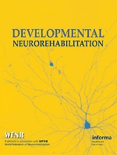
Developmental Neurorehabilitation
Scope & Guideline
Empowering research in pediatric neurorehabilitation.
Introduction
Aims and Scopes
- Neurodevelopmental Disorders:
The journal primarily addresses issues related to neurodevelopmental disorders such as cerebral palsy, autism spectrum disorders, and developmental coordination disorders, emphasizing the need for improved assessment and intervention strategies. - Rehabilitation Techniques and Interventions:
A significant portion of the research focuses on innovative rehabilitation techniques, including physical therapy, occupational therapy, and telehealth interventions, aimed at enhancing functional outcomes for children with disabilities. - Cross-Cultural Studies and Adaptations:
The journal publishes studies that adapt tools and interventions across different cultural contexts, ensuring that methodologies are relevant and accessible to diverse populations. - Assessment Tools and Methodologies:
There is a consistent focus on developing and validating assessment tools that measure functional abilities, participation, and quality of life in children with disabilities, which are crucial for tailoring interventions. - Family and Caregiver Involvement:
Research often emphasizes the role of family dynamics and caregiver training in the rehabilitation process, highlighting the importance of involving families in therapeutic interventions.
Trending and Emerging
- Telehealth and Remote Interventions:
There is a growing trend towards researching telehealth and remote intervention strategies, particularly in light of the COVID-19 pandemic, as these methods offer flexibility and accessibility for families in need of rehabilitation services. - Participation and Quality of Life Assessments:
Recent publications increasingly focus on measuring participation in daily activities and quality of life for children with disabilities, highlighting the importance of these factors in evaluating the effectiveness of interventions. - Integrated Multidisciplinary Approaches:
Research emphasizing multidisciplinary approaches that combine various therapeutic disciplines (e.g., occupational therapy, physical therapy, and speech therapy) is on the rise, reflecting a holistic view of rehabilitation. - Parent and Caregiver Training Programs:
There is an emerging focus on developing and evaluating training programs aimed at equipping parents and caregivers with skills to support their children’s rehabilitation, recognizing their critical role in the process. - Use of Technology in Rehabilitation:
Innovative uses of technology, including virtual reality and gamification in therapy, are trending, as researchers explore how these tools can enhance engagement and outcomes in rehabilitation settings.
Declining or Waning
- Traditional Pharmacological Interventions:
There is a noticeable decrease in studies focusing solely on pharmacological treatments for neurodevelopmental disorders, as the journal increasingly favors non-invasive and rehabilitative approaches. - Generalized Motor Skills Assessments:
Research centered on generalized motor skills assessments without a specific focus on contextual factors or individualized approaches has diminished, as the field moves towards more tailored and specific evaluations. - Longitudinal Studies without Intervention Focus:
Longitudinal studies that merely track developmental progress without integrating intervention strategies are becoming less prevalent, as there is a growing emphasis on actionable research that directly informs clinical practice. - Focus on Adult Outcomes from Childhood Conditions:
There has been a decline in research specifically addressing adult outcomes of childhood neurodevelopmental conditions, as the journal's emphasis shifts towards immediate interventions and outcomes in pediatric populations. - Psychological Assessments without Rehabilitation Context:
Studies that assess psychological aspects in isolation from rehabilitation practices are less frequently published, indicating a shift towards integrated approaches that combine psychological and physical rehabilitation.
Similar Journals
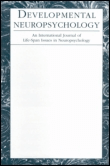
DEVELOPMENTAL NEUROPSYCHOLOGY
Illuminating Developmental Pathways in NeuropsychologyDEVELOPMENTAL NEUROPSYCHOLOGY (ISSN: 8756-5641; E-ISSN: 1532-6942) is a pivotal peer-reviewed journal published by ROUTLEDGE JOURNALS, TAYLOR & FRANCIS LTD in the United Kingdom. Since its inception in 1985, this esteemed journal has been dedicated to advancing the understanding of developmental processes that influence neuropsychological outcomes in children and adolescents. With a focus on the integration of psychological and neuropsychological perspectives, it serves as a vital resource for researchers, clinicians, and educators alike. The journal's current impact factor and its placement in the third quartile for both Developmental and Educational Psychology and Neuropsychology categories underscore its significance in the field, as it ranks in the 45th percentile in both Scopus ranks. While DEVELOPMENTAL NEUROPSYCHOLOGY does not offer open access, it presents crucial research findings and theoretical advancements that cater to professionals seeking to deepen their knowledge and application of developmental neuropsychology until 2024. By fostering dialogue among scholars and practitioners, this journal contributes meaningfully to the ongoing evolution of clinical practices and educational strategies targeting neurodevelopmental trajectories.

CoDAS
Connecting scholars and practitioners in the realm of communication disorders.CoDAS, an esteemed academic journal published by the SOC BRASILEIRA FONOAUDIOLOGIA, serves as a leading platform for interdisciplinary research within the realms of linguistics, speech, and hearing sciences. Established as an Open Access journal in 2013, it ensures broad dissemination and accessibility of scholarly work, significantly benefitting researchers, clinicians, and students alike. Based in Brazil, CoDAS has garnered credibility with its impressive Q2 ranking in Linguistics and Language, as well as its rankings in Otorhinolaryngology and Speech and Hearing categories, reflecting its substantial contribution to these fields. The journal's impact is underscored by its robust Scopus rankings, including the 67th percentile in Language and Linguistics. With a commitment to fostering innovative research and bridging gaps between theory and practice, CoDAS continues to play a vital role in advancing knowledge and clinical practices in communication disorders and auditory sciences.
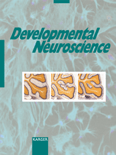
DEVELOPMENTAL NEUROSCIENCE
Pioneering Research in Brain Growth and FunctionDEVELOPMENTAL NEUROSCIENCE, published by KARGER, is a vital academic journal dedicated to advancing the field of neurodevelopmental research. Since its inception in 1978, this journal has been instrumental in disseminating high-quality studies that explore the complexities of brain development and function throughout the lifespan. With an impact factor that places it in the second quartile (Q2) of Developmental Neuroscience and Neurology categories, it ranks among the top publications in its field, offering valuable insights for researchers, clinicians, and students alike. Though primarily subscription-based, the journal remains committed to fostering academic discourse and collaboration through its extensive repository of original research articles, reviews, and case studies. The journal is located at ALLSCHWILERSTRASSE 10, CH-4009 BASEL, SWITZERLAND, and its scope spans critical areas of inquiry within developmental neurology, providing a platform for emerging ideas and methodologies. As such, DEVELOPMENTAL NEUROSCIENCE serves not only as a critical resource for seasoned professionals but also as an enriching educational tool for the next generation of neuroscientists.
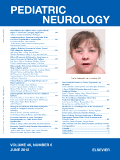
PEDIATRIC NEUROLOGY
Illuminating Pathways in Child Neurology ResearchPediatric Neurology, a prestigious journal published by Elsevier Science Inc, is a leading resource in the field of child neurology and developmental neurosciences. With an impressive impact factor and categorization in the Q1 and Q2 quartiles across several relevant fields, including Pediatrics, Neurology, and Developmental Neuroscience, this journal is essential for researchers and healthcare professionals focused on pediatric neurological disorders. Since its inception in 1985, it has provided a platform for high-quality research, clinical studies, and reviews that drive advancements in diagnosis, treatment, and understanding of neurological conditions in children. Although the journal does not currently offer open access, it maintains a robust reputation in the academic community, bolstered by its prominent ranking in Scopus metrics. By engaging with the latest findings published in Pediatric Neurology, readers will gain vital insights that contribute to improving pediatric healthcare outcomes in neurology and neuroscience.

Journal of Pediatric Rehabilitation Medicine
Championing Excellence in Pediatric Rehabilitation MedicineJournal of Pediatric Rehabilitation Medicine is a leading academic platform published by IOS PRESS, dedicated to advancing knowledge in the fields of pediatrics, rehabilitation, and physical therapy. With an ISSN of 1874-5393 and an E-ISSN of 1875-8894, this journal has carved a niche within the biomedical community, focusing on therapeutic innovations and evidence-based practices in pediatric rehabilitation. Recognized for its scholarly contributions, it holds a prestigious Q3 ranking in Pediatrics and Q2 rankings in both Physical Therapy and Rehabilitation categories, indicating its impact and relevance in the respective fields. Operating out of the Netherlands, the journal provides a comprehensive open access model that ensures that research is easily accessible to professionals, students, and researchers alike. With converged years spanning from 2007 to 2024, the journal continues to be an essential resource for those dedicated to enhancing the quality of life for children with disabilities and rehabilitation needs, fostering collaboration between clinicians and researchers through high-quality research dissemination.

Current Developmental Disorders Reports
Bridging research and practice in developmental disorders.Current Developmental Disorders Reports, published by SPRINGERNATURE, is a crucial resource for researchers, practitioners, and students in the fields of developmental psychology, psychiatry, and neuroscience. Since its inception in 2014, this journal has aimed to disseminate cutting-edge research on the multifaceted nature of developmental disorders, providing valuable insights into causation, diagnosis, and intervention strategies. With an E-ISSN of 2196-2987 and a notable standing in the Q3 quartile across multiple fields—developmental and educational psychology, developmental neuroscience, and psychiatry and mental health—this journal holds a significant position in the academic landscape. Researchers contributing to the journal benefit from its open access policies, stimulating knowledge sharing and dialogue within the scientific community. The journal’s commitment to advancing understanding in these critical areas of study is reflected in its rigorous publication standards and diverse range of articles, making it an essential read for anyone invested in the developments in mental health and developmental disorders.
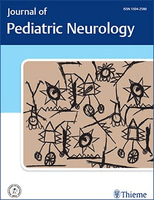
Journal of Pediatric Neurology
Fostering multidisciplinary dialogue in pediatric neurology.Journal of Pediatric Neurology, published by GEORG THIEME VERLAG KG, stands as a dedicated resource in the field of pediatric neurology, navigating the complex interplay of neurological and developmental disorders affecting children. With its ISSN 1304-2580 and E-ISSN 1875-9041, this journal has been a pivotal platform for advancing research since its inception in 2003, and continues to present critical findings and discussions up to 2024. Although currently categorized in the Q4 quartile for both Neurology (Clinical) and Pediatrics, Perinatology and Child Health within Scopus rankings, the journal's commitment to fostering scholarly dialogue is essential for researchers, clinicians, and students dealing with pediatric patients. Its structured coverage of various neurological disorders, treatment strategies, and innovative therapies contributes to the broader understanding of pediatric neurology, despite the challenges noted in its ranking percentile. By encouraging submissions from diverse disciplines, the journal aims to enhance clinical practice and bridge gaps in knowledge, ensuring a multidisciplinary approach to child health and development.
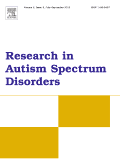
Research in Autism Spectrum Disorders
Pioneering insights into autism spectrum disorders.Research in Autism Spectrum Disorders, an esteemed journal published by ELSEVIER SCI LTD, is dedicated to advancing the understanding of autism spectrum disorders through innovative research and scholarly articles. Since its inception in 2007, the journal has carved out a distinguished place in the field, reflected in its robust 2023 Impact Factor and Q2 ranking in key categories such as Clinical Psychology, Developmental and Educational Psychology, and Psychiatry and Mental Health. By bridging the gap between research and practice, this journal serves as a vital resource for researchers, professionals, and students alike, fostering collaboration and knowledge-sharing among those dedicated to improving outcomes for individuals with autism. Featuring a broad scope that encompasses various aspects of autism research, the journal remains committed to publishing high-quality studies that drive the conversation forward in this critical area of study. Access options for the journal's content are available under the Elsevier guidelines, ensuring that pivotal research reaches a wide audience.
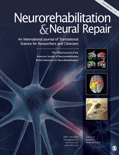
NEUROREHABILITATION AND NEURAL REPAIR
Innovating Recovery: Bridging Neurology and Rehabilitation.NEUROREHABILITATION AND NEURAL REPAIR, published by SAGE Publications Inc, is a leading journal in the fields of neurology and rehabilitation, addressing critical issues in neurorehabilitation across a broad spectrum of neurological disorders. With an impressive impact factor and consistently ranked in the Q1 category in both Neurology and Rehabilitation, this journal is esteemed for its rigorous peer-reviewed research contributing to advancements in clinical practice and rehabilitation strategies. The journal boasts an HIndex that reflects its global influence and is highly regarded among professionals and researchers, ranking in the top tiers of Scopus metrics across various categories. Since its inception in 1987, NEUROREHABILITATION AND NEURAL REPAIR has fostered innovative research aimed at improving outcomes for patients with neurological impairments, making it a crucial resource for those engaged in clinical research and therapeutic interventions. Explore this prestigious journal to stay at the forefront of developments in neurorehabilitation, with access options available for diverse readerships.

Pediatric Physical Therapy
Connecting research and practice for enhanced child health.Pediatric Physical Therapy is a premier academic journal dedicated to advancing the field of pediatric rehabilitation and therapy. Published by Lippincott Williams & Wilkins, this journal serves as a critical resource for researchers, practitioners, and students engaged in the disciplines of medicine, pediatrics, and physical therapy. With a robust focus on innovative practices and research findings from 1989 to 2024, Pediatric Physical Therapy disseminates insights that improve therapeutic outcomes for children. Though categorized in the third quartile in multiple relevant fields, its contributions remain invaluable for those striving to enhance child health and physical recovery. Researchers will benefit from the journal's commitment to sharing empirical studies, clinical methodologies, and evidence-based practices in pediatric therapy, while professionals will find a wealth of knowledge that informs cutting-edge techniques in their own practices. Be part of a community that is at the forefront of pediatric physical therapy and rehabilitation advancements.